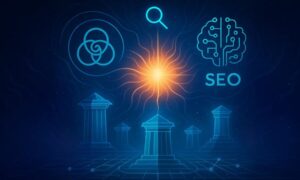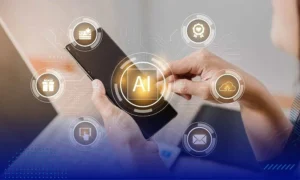Artificial Intelligence (AI) has made significant strides in reshaping the educational landscape. Sandeep Kumar Nangunori, a thought leader in this field, highlights how AI-driven databases are setting new benchmarks in personalized learning and educational efficiency.
The Power of Intelligent Database Systems
At the core of the transformation lies the evolution of database systems from simple storage solutions to intelligent platforms. These systems now process vast amounts of multimodal data, including student interactions, assessment outcomes, and behavioral patterns. By leveraging advanced machine learning algorithms, AI-driven databases enable institutions to move away from one-size-fits-all teaching methods, creating tailored learning pathways for each student.
Such systems provide real-time analytics, dynamic content delivery, and predictive insights, allowing educators to identify learning gaps and intervene proactively. This innovation not only enhances student engagement but also improves academic outcomes significantly.
Adaptive Learning: The Key to Personalization
Adaptive learning algorithms are a cornerstone of AI-powered education. They analyze diverse data points, such as performance metrics and engagement patterns, to adjust content complexity and pace. Features like “dynamic scaffolding” ensure that students remain challenged yet supported within their optimal learning zone.
Additionally, these algorithms integrate cognitive and emotional dimensions to recommend resources that align with individual learning styles. This dual focus on personalization and metacognitive development transforms the traditional learning experience into a highly interactive and engaging process.
Behavioral Insights for Holistic Education
AI-driven systems excel at capturing nuanced behavioral data, including navigation patterns, time-on-task, and peer collaboration. This data is used to construct detailed learning profiles that inform both short-term interventions and long-term educational strategies.
For instance, early warning systems powered by AI can identify students at risk of falling behind by analyzing subtle changes in engagement or performance. These systems trigger timely interventions, providing additional support before issues escalate. Such proactive measures foster a more inclusive and equitable learning environment.
Enhancing Educator Efficiency
AI-driven databases are not just beneficial for students; they also empower educators by streamlining administrative tasks and enhancing teaching effectiveness. Automated grading, real-time feedback mechanisms, and data-driven insights allow teachers to focus more on personalized instruction.
Furthermore, professional development programs tailored for educators ensure that they can fully leverage these advanced tools. Training in AI-driven instructional design and adaptive teaching methodologies equips teachers to meet the demands of modern educational paradigms.
Overcoming Challenges
While the potential of AI in education is immense, implementing such systems comes with its challenges. Data standardization remains a critical hurdle as institutions grapple with diverse formats and sources. Interoperability between existing systems and new AI-driven platforms is equally complex, requiring robust integration frameworks.
Equity and access are also major considerations. Bridging the digital divide and ensuring that advanced learning tools benefit all students—regardless of socioeconomic background—are essential for the success of these technologies. Addressing these challenges requires a concerted effort from policymakers, educators, and technology providers.
The Future of AI in Education
Emerging technologies promise even greater possibilities for education. Concepts like Education 5.0 envision the integration of AI with immersive technologies, creating intelligent learning environments that adapt to the evolving needs of students. Future developments will likely focus on refining personalization algorithms, enhancing cross-platform compatibility, and developing sophisticated assessment tools.
Research in this area continues to expand, exploring innovative solutions such as integrating artificial and human intelligence, building adaptive learning ecosystems, and fostering student-centered educational models. As these advancements unfold, they will redefine the boundaries of what is possible in education.
In conclusion, as Sandeep Kumar Nangunori aptly demonstrates, AI-driven databases are more than a technological advancement—they represent a paradigm shift in how education is delivered. By enabling personalized learning at scale, these systems enhance student outcomes, improve teaching efficiency, and pave the way for a more inclusive educational future. Moving forward, a balanced approach that prioritizes accessibility, privacy, and pedagogical effectiveness will be crucial in realizing the full potential of AI in education.



































